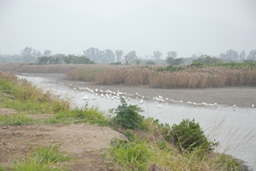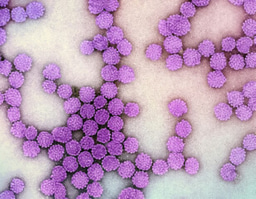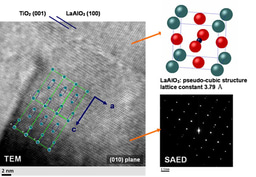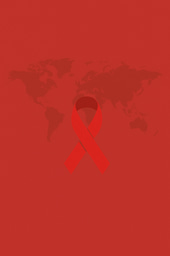Gender Equality in Water Domain
Published in Social Sciences and Earth & Environment

International Women’s Day (March 8), World Day for Glaciers (March 21), and World Water Day (March 22), all celebrated in March, brought attention to issues concerning gender equality (SDG 5)and the management of water resources and sanitation (SDG 6). Although the issues concerning these two separate SDGs (SDG5 for gender equality and SDG6 for clean water and sanitation) seem to be fully independent, part of the problems they bring attention to are actually strongly related.
In order to highlight the common ground, we, as members of the SDG6 and SDG5 working groups at Springer Nature, want to bring your attention to some Springer Nature publications on these topics, and on how our publications have a real and practical impact on the world.
Why Gender Matters in Water Security
In recent years, the consideration of gender as a parameter in studies on water management has revealed that women, especially in certain areas, are overwhelmingly responsible for supplying water both for working on crops and for domestic purposes. The study of how the consideration of gender plays a role in water management has become a crucial area of focus for researchers and policymakers. The elimination of gender inequalities is central to the Sustainable Development Goals (SDGs), with SDG 5 specifically committing to achieving gender equality and empowering women and girls. Gender equality is a key element of every other SDG, reflected in 45 SDG targets and 54 SDG indicators. To ensure that the SDGs are met, women and girls must be able to engage and participate in decision-making and action, and must therefore not be discriminated against.
SDG 6 “Ensure availability and sustainable management of water and sanitation for all”, will only be met if, by 2030, also all women and girls can access adequate water, sanitation, and hygiene services. These services are essential not only for SDG 6 but also for SDG 1 “End poverty in all its forms everywhere”, SDG 2 “End hunger”, SDG 3 “Ensure healthy lives … for all”, and SDG 4 “Ensure equitable and quality education … for all”. Achieving gender equality in the water domain is crucial for the accomplishment of international gender equality and water-related commitments, including those enshrined in the 2030 Agenda on Sustainable Development.
Key Opportunities
1. Better Data
Collecting sex-disaggregated data is vital to track progress, guide policy, and hold institutions accountable. Without it, advocating for the acknowledgment of women’s fundamental role in water management, their inclusion in leadership roles, or securing funding for these and other initiatives will prove difficult.
2. Human Rights Approach
Water and sanitation are fundamental human rights. Yet billions (WHO/UNICEF 2023) lack safe access to clean water, a fact which disproportionately affects women and girls, because of their specific hygienic needs and their vulnerability in unsafe contexts such as severe poverty, or war zones. Inclusive WASH (water, sanitation and hygiene) solutions must be designed with the needs of women and girls as a crucial focus, and with their inclusion as policymakers and leadership on these issues.
3. Specific Actions to Promote Gender Equality in Water Security:
- Inclusive Infrastructure: Design water systems that serve both women and men equally, targeting the specific additional needs that women have compared to men when it comes to sanitation and hygiene.
- Women’s Leadership: Empower women in community water governance and decision-making, by including female leaders and policymakers at the decision table.
- Education & Training: Equip women with skills and knowledge to let them assume active roles in water management.
- Targeted Funding: Invest in gender-sensitive water initiatives.
Showcasing Efforts and Research Impact: Examples of SN Publications
Although, in practice, there is still a lot of work to do to achieve gender equality in the water domain, it is important to highlight that Springer Nature is publishing research that showcases some of the efforts to integrate gender and water security, including publications such as:
Open Access Articles:
- Tesfai et al., “WASH services and menstrual hygiene management among reproductive age females in the IDPs camps of Shire town in Tigray region of Ethiopia: a cross-sectional study”, Scientific Reports, 2024
- Bandyopadhyay et al., “The association between access to key household resources and violence against women”, Scientific Reports, 2023
- Chima et al., “Prevalence and factors associated with water, sanitation and hygiene (WASH) facilities deprivation among children in Nigeria”, BMC Pediatrics, 2025
Open Access Books and Chapters:
- Bobel et al. (Eds), The Palgrave Handbook of Critical Menstruation Studies, Palgrave, 2020
-
- Chapter: Roaf & de Albuquerque, “Practice Note: Why We Started Talking About Menstruation—Looking Back (and Looking Forward) with the UN Special Rapporteur on the Human Rights to Water and Sanitation”, pp. 475-483
- Adeola et al., Gender Equality, Climate Action, and Technological Innovation for Sustainable Development in Africa, Palgrave, 2024
- Dansie et al. (Eds), The Water, Energy, and Food Security Nexus in Asia and the Pacific, Springer, 2024
-
- Chapter: Imbrugia, “Secured WEF and Gender: Better Data for Equality and Resilience”, pp. 281-295
Moreover, Springer Nature publications on these topics are having a real impact on the world: for one, they are routinely cited in real policies that frame action and regulate water management. As an example, take a look at these SDG6 policies citing SDG5-related publications:
- Integrating neglected tropical diseases into global health and development: fourth WHO report on neglected tropical diseases, citing this article.
- Applying gender equality, disability, and social inclusion principles in agricultural water resources management, citing this article.
Sources and further information about the intersection of gender and water security:
- UNEP-DHI, GWP and UN Women, 2025. Mainstreaming gender equality in water resources management: Global status and 7 pathways to progress.
- UNESCO World Water Assessment Programme (WWAP)- Addressing gender inequality in the water sector.
- UN Water, 2025, Water Facts- Water and Gender.





Please sign in or register for FREE
If you are a registered user on Research Communities by Springer Nature, please sign in